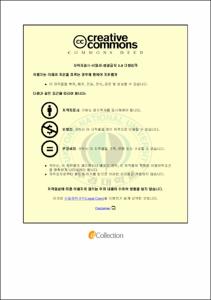태양열 지원 액체건조제 공기 제습기 시스템의 효율에 관한 연구
- Alternative Title
- Study on the effectiveness of the Solar Assisted Liquid Desiccant Air Dehumidifier System
- Abstract
- Summary
The desiccant air dehumidification experiment data was obtained by real experiment using lithium chloride(LiCl) desiccant as the solution. The complete packed tower was used in this present study. The experiments were divided into the air dehumidification and desiccant regeneration process. The air dehumidification process experiment has done using the 2m.s-1, 3m.s-1 and 4m.s-1 air velocity variations. The desiccant temperature for the dehumidification process was set at 10°C. By comparing the initial and the final state of dehumidification at the same temperature of desiccant, the lower air velocity variation has the higher temperature change and has the lower humidity change. The lowest air velocity has the lowest humidity slope but its effectiveness is the highest. And the higher air velocity has higher MRR and mass transfer coefficient but has lower effectiveness and COP
The desiccant regeneration experiment was done by heating the liquid desiccant at specific temperature in a chamber and then blows the referenced air in. The air properties of the inlet and outlet and also the solution temperature were monitored. The result shows that the effectiveness increases with increment of temperature difference. But in condition when the temperature different of desiccant solution is start around 25°C, the effectiveness is seen has similar value. Hence if the regenerator uses the solar thermal energy to drive the regeneration process, the extra heater should be turned on when the solar energy is not enough to maintain the temperature difference between air and solution to 25°C.
Evaluating the mass transfer performance can be done by using MRR and mass transfer coefficient, but the good performance is not always efficient. The total system efficiency can be evaluated by system COP but this COP is related to the all system components therefore to evaluate a partial system COP, the partial COP evaluation should be done to the specific component. The mas transfer component in the dehumidifier and regeneration is the fluid interface, and the partial COP to this component is the effectiveness. Hence, the effectiveness can be used as the mass transfer efficiency and should be differ from the system efficiency.
The mass transfer coefficient is related to the MRR of the system that is a mass transfer performance indicator. If the system target is the dehumidification process performance, the higher mass transfer performance is the best result even the higher mass transfer coefficient usually has a low effectiveness. The analogy of this system can be assumed similar to the car, the good performance of the car usually has a bad fuel saving.
- Issued Date
- 2014
- Awarded Date
- 2014. 2
- Type
- Dissertation
- Publisher
- 부경대학교
- Alternative Author(s)
- Hong, Boo Pyo
- Affiliation
- 대학원
- Department
- 대학원 기계공학학ㆍ연협동과정
- Advisor
- 최광환
- Table Of Contents
- Contents
Summary i
Contents vi
List of Figures ix
List of Table xiv
NOMENCLATURE xv
Chapter 1 Introduction 1
1.1 Motivation and scope 3
1.2 Research goal 4
1.3 Research contributions 4
Chapter 2 Literatures 5
2.1 Thermally-activated refrigeration cycle 5
2.1.1 Absorption chiller 5
2.1.2 Multiple-effect absorption chillers 8
2.1.3 Solid desiccants 9
2.1.4 Liquid desiccants 11
2.2 Performance evaluation 17
2.2.1 Moisture removal rate (MRR) 18
2.2.2 Effectiveness (η) 18
2.2.3 Coefficient of performance (COP) 21
2.2.4 Mass transfer coefficient 23
2.3 Performance variable 25
2.3.1 Dehumidifier 25
2.3.2 Regenerator 30
2.4 Previous study 36
2.5 Properties of the moist air 48
2.5.1 Humidity ratio 51
2.5.2 Relative humidity 52
2.5.3 Degree of saturation 53
2.5.4 Enthalpy 54
2.5.5 Sensible heat and latent heat 57
2.6 Properties of the lithium chloride 58
2.7 Control strategies for indoor air humidity 63
Chapter 3 Method 70
3.1 Experiment method 70
3.2 Experiment apparatus 72
3.2.1 Dehumidifier evaluation 72
3.2.1.1 Components 75
3.2.1.2 Measurement 79
3.2.1.3 Procedure 82
3.2.2 Regenerator evaluation 82
3.2.2.1 Components 82
3.2.2.2 Measurement 84
3.2.2.3 Procedure 86
3.2.3 Solar collector 88
3.2.3.1 Components 88
3.2.3.2 Measurement 89
3.2.3.3 Procedure 91
Chapter 4 Result and discussion 92
4.1 Dehumidifier 92
4.2 Regenerator 99
4.3 Solar assisted water heater 104
Chapter 5 Conclusions 106
References 109
Acknowledgments 115
- Degree
- Doctor
- Appears in Collections:
- 대학원 > 기계공학학연협동과정
- Files in This Item:
-
-
Download
 태양열 지원 액체건조제 공기 제습기 시스템의 효율에 관한 연구.pdf
기타 데이터 / 4.07 MB / Adobe PDF
태양열 지원 액체건조제 공기 제습기 시스템의 효율에 관한 연구.pdf
기타 데이터 / 4.07 MB / Adobe PDF
-
Items in Repository are protected by copyright, with all rights reserved, unless otherwise indicated.